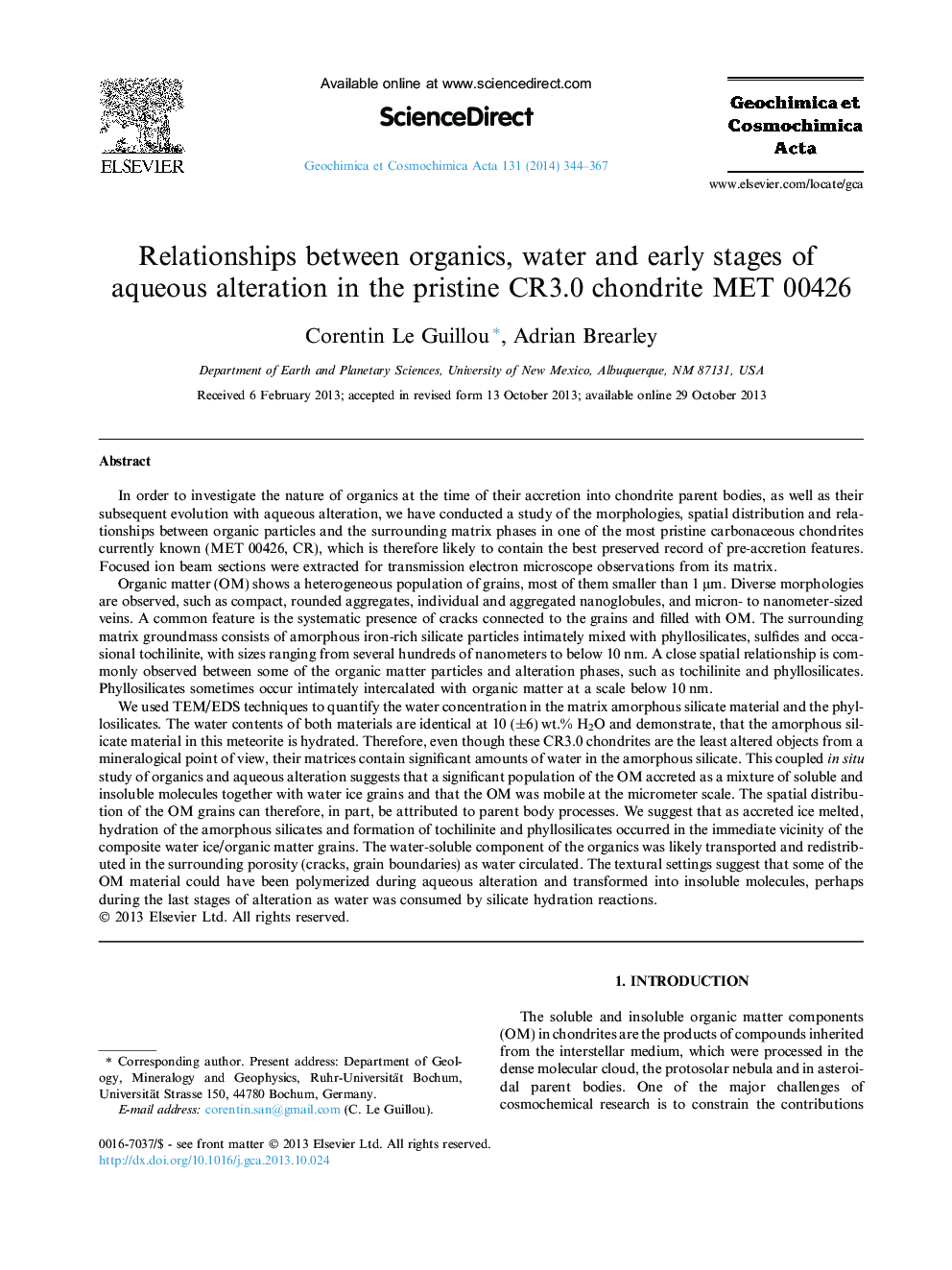| Article ID | Journal | Published Year | Pages | File Type |
|---|---|---|---|---|
| 6438646 | Geochimica et Cosmochimica Acta | 2014 | 24 Pages |
Abstract
We used TEM/EDS techniques to quantify the water concentration in the matrix amorphous silicate material and the phyllosilicates. The water contents of both materials are identical at 10 (±6) wt.% H2O and demonstrate, that the amorphous silicate material in this meteorite is hydrated. Therefore, even though these CR3.0 chondrites are the least altered objects from a mineralogical point of view, their matrices contain significant amounts of water in the amorphous silicate. This coupled in situ study of organics and aqueous alteration suggests that a significant population of the OM accreted as a mixture of soluble and insoluble molecules together with water ice grains and that the OM was mobile at the micrometer scale. The spatial distribution of the OM grains can therefore, in part, be attributed to parent body processes. We suggest that as accreted ice melted, hydration of the amorphous silicates and formation of tochilinite and phyllosilicates occurred in the immediate vicinity of the composite water ice/organic matter grains. The water-soluble component of the organics was likely transported and redistributed in the surrounding porosity (cracks, grain boundaries) as water circulated. The textural settings suggest that some of the OM material could have been polymerized during aqueous alteration and transformed into insoluble molecules, perhaps during the last stages of alteration as water was consumed by silicate hydration reactions.
Related Topics
Physical Sciences and Engineering
Earth and Planetary Sciences
Geochemistry and Petrology
Authors
Corentin Le Guillou, Adrian Brearley,
